Learn how to use a beard brush, the best materials to look for when shopping, and our top 10 recommendations for all beard types.
When men grow their hair out, you can always tell the difference between those who put effort into upkeep and those who don't. The same rules apply to the hair on your head as your face: You’ve got to trim your beard at every stage to keep things looking intentional and shapely. You should pick up a trick or two (like beard fading) to go the extra mile. And while a beard fade may seem more advanced, there's an extremely easy beard-maintenance habit to pick up, and it only requires investing in one of the myriad beard brushes available on the market.
Contrary to popular belief, a beard brush is not a styling tool, but rather a maintenance one. “Beard brushes help detangle hair, exfoliate the skin beneath the beard, and help pull dirt and natural oils out,” says Dale Grinstead-Mayle, owner and barber at Goodfellow's Tonsorial Parlor, with barbershops in White Salmon, WA and Columbus, OH. “Beard brushes are also fantastic for evenly distributing beard oil into the beard and working it down to the follicles and skin where it's most effective.”
Read on to learn more from Grinstead-Mayle about how to wield your own beard brush, the best materials to look for, and our top 10 beard brush recommendations.
How to Use a Beard Brush
Ideally, you’ll be starting with a clean, dried beard. You should rub a couple drops of beard oil through the mane first, or directly into the brush bristles themselves. Adjust the amount for especially bulky beards. Note a brush may not be the first tool you use, either: “For thick, coarse, or curly hair, you may want to use a beard comb first to help untangle, then introduce a brush,” Grinstead-Mayle says.
As for the brushing itself, you can start by sending the hairs in every possible direction—in other words, brushing it all out. In this way, you’re more or less having a go at all the hairs, not just those on the outermost parts of the whole bush.
Next, brush everything back into place, using a calmer, steadier hand than when you brushed it all out. For bulkier beards, you can do this in layers, bringing the inner, lowermost hairs down first, then the next layer, then the upper cheeks. Follow the curvature of your face, take it easy around the mouth, and sculpt the entire thing into its final place at which point you can also apply some heavier styling balm, or use a beard comb to tame remaining strays.
What to Look for in a Beard Brush
When shopping for a beard brush, you’ll want to factor in things like materials, design, and size into your decision. These variables will determine which brush is best for your beard or regimen, namely when it comes to size and design. As for materials, it might be more of a personal decision.
Bristle Material
Boar bristle brushes are the industry standard. “Boar hair is rigid but soft, and still retains a little moisture, which reduces frizziness and static while brushing,” Grinstead-Mayle explains. However, if you want your products to be vegan, then he says most synthetic options are extremely sufficient these days, too. Luckily, many boar brush makers source the bristles from animals that were already being raised for meat; still, if that disinterests you, go synthetic. (Many brands will denote if their boars were raised humanely, so it’s worth looking out for that.)
Body Material
Grinstead-Mayle prefers using wood-bodied brushes, given the weight they have in your hand—and because they feel classic. “However, plastic is easier to clean, while wood can hold moisture or even mold,” he says. “Store it in a dry location, but safe from dust.”
Shape/Design
Of the beard brushes out there, you’ll most commonly notice oval and rectangle options, though odder shapes also exist. You’ll also see beard brushes with handles as opposed to palm-held ones. Grinstead-Mayle recommends a more thick, oval, or brick-like picks that you hold with the palm of your hand, as opposed to narrower brushes with a handle. “[With thick palm-held brushes] there's more coverage that allows bristles to pull out the tangles,” he says.
Size
While pocket brushes seem like a convenient alternative to a standard size, Grinstead-Mayle advises against using them as your everyday option. “They're too small and carrying them with you will cause the bristles to bend and break,” he says. A pocket brush might get a pass if you want a brush that takes up less space and you don’t always have a beard but want one for the if and when. That said, if you do take a brush with you on the road, no matter its size, make sure it's stored safely in a hard-shelled case or well-structured Dopp kit of some type.
How to Care for a Beard Brush
On the topic of carrying a beard brush in a well-structured or hard-shelled vessel, it begs the question: How do you care for a beard brush in order to extend its optimal use? Here are a few of Grinstead-Mayle’s tips on using, washing, and storing your brush.
- Usage: “I've found that combing a little beard oil back into the brush (after it's dried) keeps the bristles from getting brittle.”
- Washing: “Don't use hot water; warm is best with a little shampoo. Also, don't use your brush while your hair is wet. It can pull a lot of hair out this way.”
- Storage: “Always store your brush in a dry place, bristles up. This will keep them from bending and warping over time.”
10 Best Beard Brushes for Men
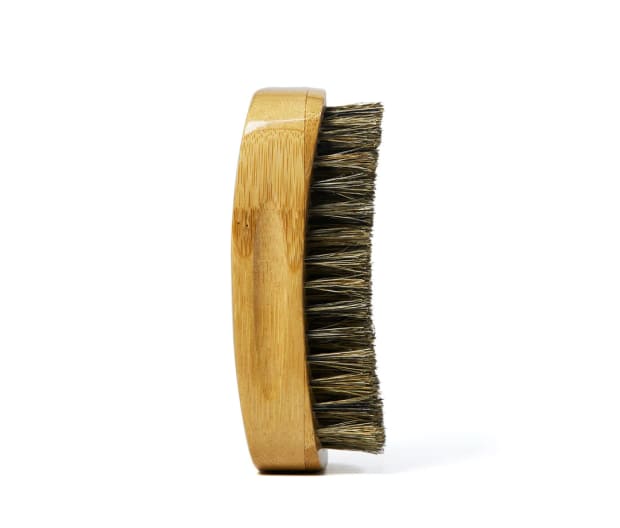
1. Professor Fuzzworthy's Boar Bristle Beard Brush
Best Barber-quality Beard Brush
Grinstead-Mayle loves this 100 percent boar bristle brush with an arched wooden handle, providing perfect grip and use.
[$16.95; professorfuzzworthy.com]
Courtesy Image
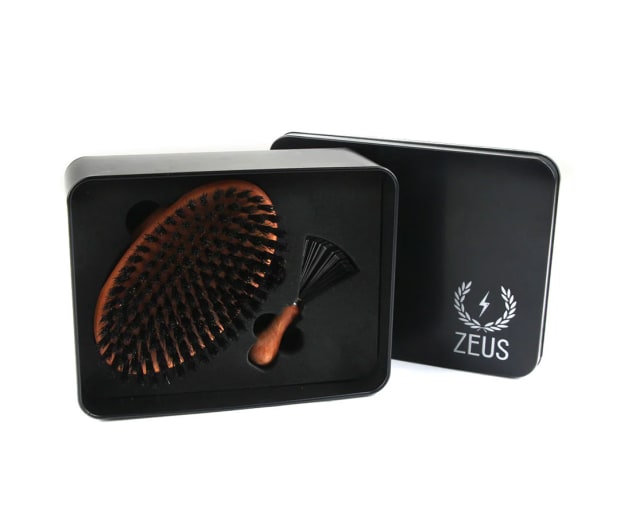
2. Zeus Oval Military Brush With Bristle Cleaner
Best Beard Brush, According to Men’s Journal Editors
Zeus’ oval boar bristle brush comes in two different options: firm bristles for thicker, burlier beards and soft bristles for sparser, shorter beards. It’s also got a rake to help clean the brush itself, as well as a tin to keep it clean, dry, and protected between uses.
[$44-48; zeusbeard.com]
Courtesy Image
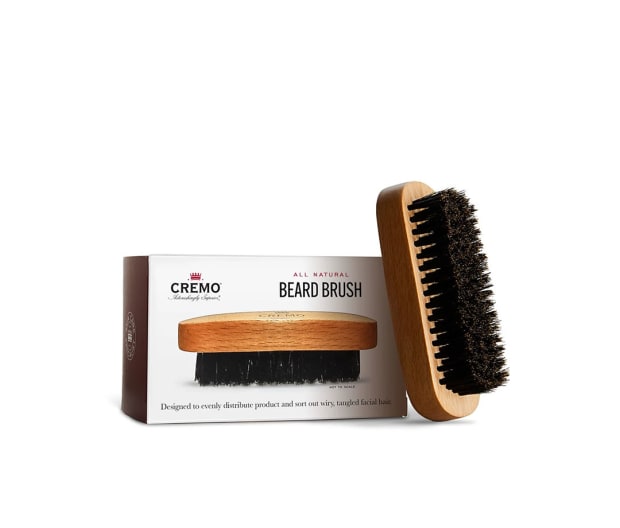
3. Cremo Beard Brush
Best Boar Bristle Beard Brush
This brush checks all the requisite boxes: sturdy hairs, generous size, wood body—and at an accessible price point, too.
[$12; cremocompany.com]
Courtesy Image
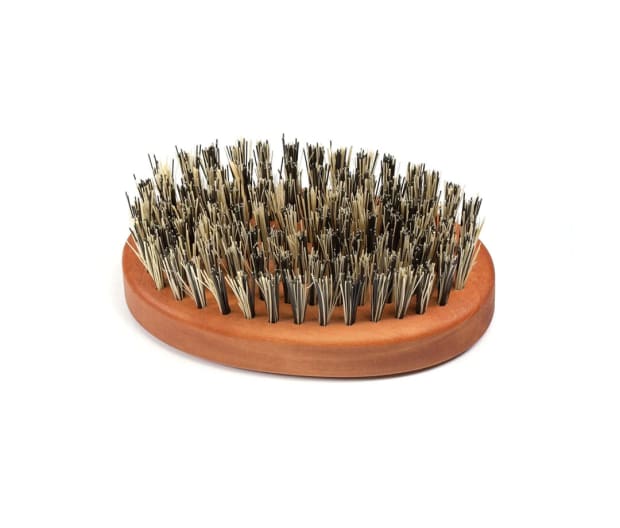
4. Fendrihan Vegan Beard Brush
Best Synthetic Beard Brush
If you prefer boar-less bristles, then pick up a vegan brush—like this excellent option from Fendrihan, German purveyors of stellar grooming products. It has a pearwood body but substitutes the boar bristles for tampico fibers.
[$12; fendrihan.com]
Courtesy Image
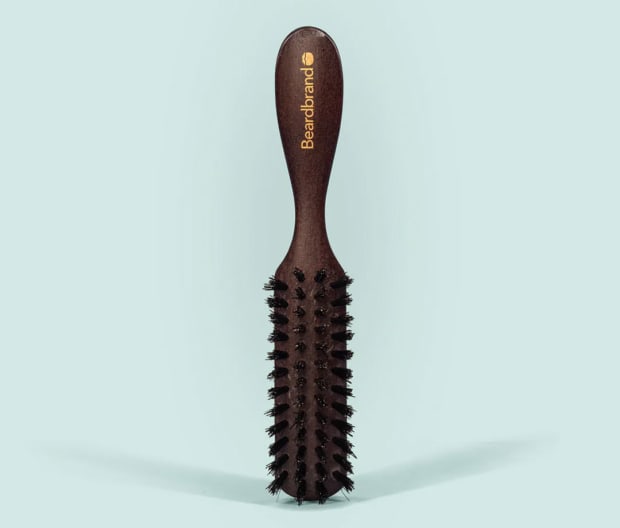
5. Beardbrand Travel Beard Brush
Best Travel Beard Brush
While our go-to brush is one that holds in the palm of your hand, travel brushes can often be too small to get a good grip. Get one with a handle like Beardbrand’s so you can tame your mustache and beard on the go, without taking up much real estate in your Dopp kit.
[$23; beardbrand.com]
Courtesy Image
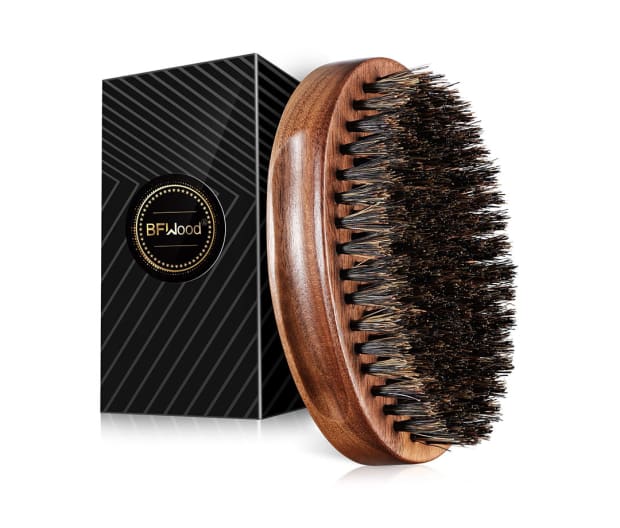
6. BasicForm Beard Grooming Brush Black Walnut
Best Beard Brush, According to Amazon Reviews
No wonder this one has a 4.7 rating out of more than 5,000 reviews. For one, that eye-catching walnut body helps it stand out and live long, while the bristles themselves are strong enough for your beard but gentle enough for your hair up top.
[$30; bfwoodbeard.com]
Courtesy Image
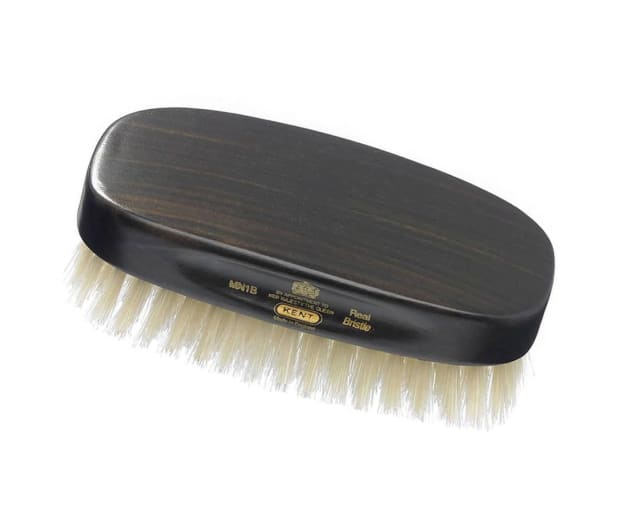
7. Kent MN1B Ebony Pure White Bristle Rectangular Brush
Best Luxury Beard Brush
Beautiful ebony wood with contrasting white boar bristles—this is the epitome of luxurious grooming. It’s technically a hair brush, but these stiff bristles sort out beard hairs like first-year cadets.
[$136; amazon.com]
Courtesy Image
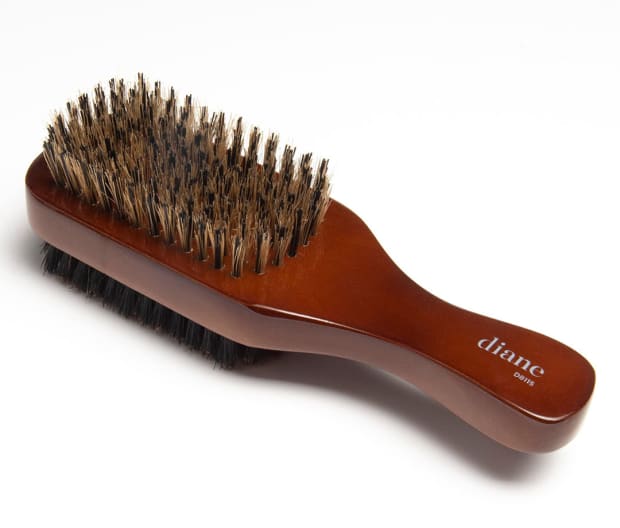
8. Diane Boar Double-sided Club Brush
Best Beard Brush for Growing Beards
If you have a short or medium beard and want a brush for it now, then you might have to upgrade to a sturdier one later—unless you invest in a double-sided option like Diane. Use the medium-give bristles while it’s short, and switch to the firmer side when things get less tenable.
[$7; amazon.com]
Courtesy Image
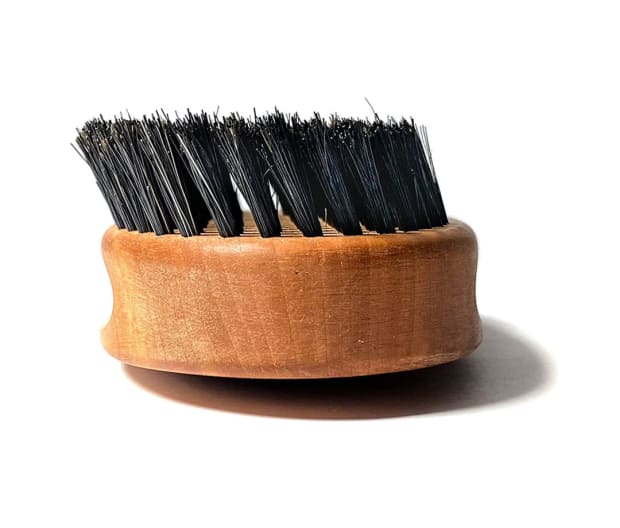
9. ZilberHaar Slanted Military Beard Brush
Best Hair and Beard Brush
Slanted bristles make this brush optimal for exfoliating face and scalp alike; simply run it against the grain to lift dead skin cells, and with the grain to brush the hairs.
[$24.99; amazon.com]
Courtesy Image
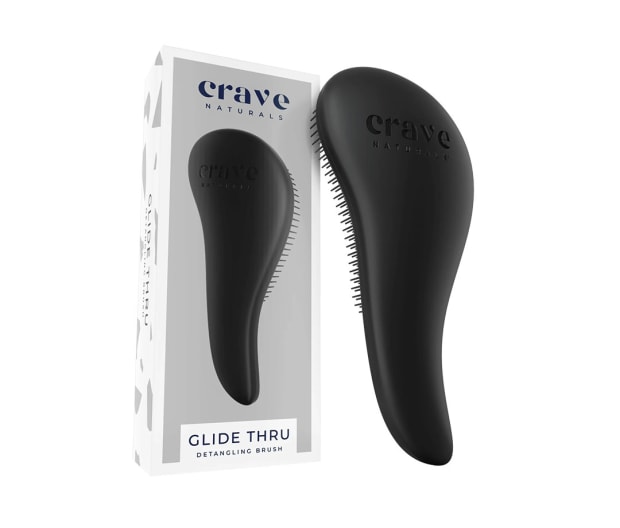
10. Crave Glide Thru Detangling Brush
It’s not technically a beard brush, but it can give thick, coarse, and long beards a good sorting out before you introduce the boar-bristled mane event.
[$12; cravenaturals.com]
Courtesy Image
from Men's Journal https://ift.tt/j3Fzywl
via IFTTT
